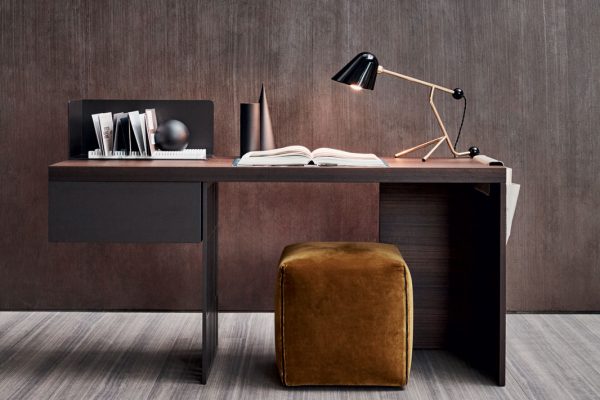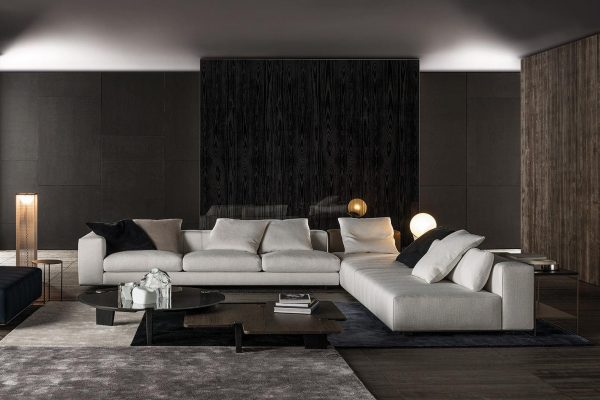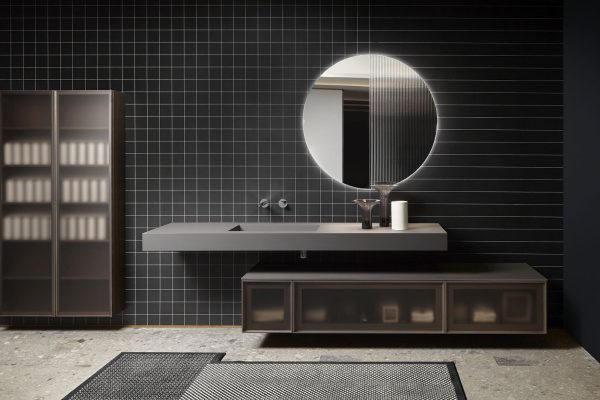Arclinea kitchens, an Italian history symbol of culture and style
Cozy, functional and aesthetically beautiful, to look at and to live in. The kitchen is the center of the home, a place for sharing moments with the family but also a refuge where one can devote oneself to stress-relieving activities such as preparing comfort food, experimenting with new recipes, through a cultural level enhancement of food. Arclinea in its collections since 1925 combines all these dimensions, bringing design elements typical of restaurant kitchens into the domestic sphere. A story, that of this made-in-Italy excellence born in Caldogno, that also tells of the cultural change that has taken place in the country around the act of cooking and the concept of food, which has been translated into a series of bold and unprecedented stylistic choices, into new architectures for living. Starting with its name, Arclinea, in which the same prefix Arc, stands for Rational Modular Furniture, and also evokes the idea of the kitchen as an architectural design of the domestic space. In fact, as early as 1963, at the height of the economic boom, he began his revolution with the ‘Claudia’ line: it was the first kitchen with built-in, purpose-designed and produced appliances. Then, from 1986, with the collaboration with the arrival ofarchitect Antonio Citterio, who would progressively become the designer of reference, a new phase of renewal and aesthetic and spatial quality began. Thus home kitchens are born that take their cues from those in restaurants, increasing performance and taking aesthetics to very high levels.
Thea, the kitchen symbol of practicality and aesthetic minimalism
A separating door profile becomes a functional solution to open the storage units: this is the distinctive element of Thea, a model that borrows its name from the first kitchen designed by Arclinea, in 1958. In his re-edition, architect Antonio Citterio combines extreme practicality with the aesthetic minimalism typical of kitchens without handles, separating the kitchen into two areas that are distinct and complementary to each other: the first mainly operational, the second with a more convivial use, designed for the living area. Thea comes in two versions, Wet and Show kitchens, functional service kitchens, perfectly equipped workplace, but at the same time also livable and usable space, bright and warm.
Italy, the first professional kitchen designed for the home environment
Italia was launched in 1988 and is a professional kitchen for the home, perfect for home chefs who want to bring restaurant performance to home spaces. It is the first line created by architect Antonio Citterio for Arclinea and marks an innovative turning point in the modern conception of the space of cooking with the unprecedented aesthetic solution of steel: unalterable and resistant to water and fire, technically processed with the precision necessary for the best performance All layouts follow the same principle: generous worktops next to capacious columns with efficient and well-designed internal accessories, elongated cooking surfaces, two separate washing areas, one for dishes and the other for food preparation.
Convivium, the convivial kitchen with the table in the center
Convivium is an open space, putting the table and the moments spent around it sharing chats and scenes of life back at the center. A kitchen understood as a free and perfectly organized space, where being together becomes something new to share every day, a place where a whole series of concrete actions, from preparation to storage, are transformed into rituals and emotions. Convivium furnishes the walls of a room that becomes warm, cozy and functional, with island-table placed in the center and shelves running the entire perimeter of the room. The old-fashioned kitchen hanger becomes a functional double steel shelf and integrates the hood, light, sockets, and even a domestic greenhouse.
This is where the aromas in the kitchen tell familiar stories or faraway places, old recipes are handed down and new ones are experimented with, and, most importantly, everyone eats together around the big table rediscovering their own rhythm.
Lignum et Lapis, wood and stone for a kitchen with island-sculpture
Cooking and at the same time sharing the experience with guests. This is the concept that characterizes Lignum et Lapis, a project in which wood and stone are the protagonists of the kitchen, placing at the center of the space the stone or steel island-sculpture conceived as a living unit in its own right, operational and convivial at the same time. On the one hand, guests can watch the preparations, and on the other hand, those who cook share with guests the techniques and taste of good eating. The novel door enhances the value of natural wood with its unique slatted design in varying widths and distances. It is available in various finishes: larch, mahogany, Nordic oak and in all the lacquer colors of the Collection.
A creative and exclusive design that is the result of great formal study and technological research.



